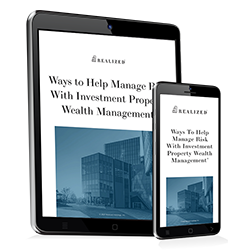
Every investment involves risk with the possibility of gain. Where risk is the potential for financial loss and/or uncertainty in investment decisions or activities, accurately quantifying the level of risk is key to healthy investing.
When we talk about risk in real estate, there are several different types that investors must manage. Here are the most common types of real estate risk.
General Market Risk and Real Estate Market Risk
Markets experience their ups and downs based on macroeconomic and microeconomic factors, interest rates, inflation, and other market trends. The real estate market also experiences unpredictable tendencies that play a role in prices and rental rates. From changes in supply and demand, interest rates, the state of the economy, demographics, government policies, and unforeseen events, all of these contribute to real estate trends.
Although markets are difficult to predict, investors can develop an investment strategy for a specific property relative to its position in the market cycle. Real estate investments should be monitored and adjusted as needed.
Geographic Risk
Location matters, and it should be a determining factor in your investment decisions. The best location will potentially give the best return on investment but when evaluating market risk, investors need to look at the bigger picture. Large populations with positive demographic trends with a diverse economy could better recover or shelter market downturns than smaller, less diverse markets.
Also, top primary markets are usually more liquid and receive the most interest from institutional investors with higher transaction volume. Secondary markets are less liquid with smaller buyer pools, but they have the potential to offer higher projected returns on similar properties.
Sponsor Risk
Your financial sponsor should be selected based on various parameters. Their track record, performance numbers, and full-cycle properties should be compared to industry standards and internal statistics.
Property Specific Risk
There’s real estate risk based on tenant-base and property type. Here are some factors to consider:
- Multifamily: Average tenant household income, income to rent ratio, and type of work.
- Commercial: Financial situation of tenants, historical sales of the property, investment-grade credit of the tenants, lease structure and remaining term, and if the leases are guaranteed and by whom.
- Single-family: Lease terminations and broken agreements can reduce cash flow, and unanticipated maintenance costs can drain cash reserves.
Structural Risk
Structural risk deals with the financial structure of your real estate investment and the rights it gives to individual participants. Rankings are provided to debts for the purpose of repayment in the event of liquidation, where a senior secured loan is at the top and equity is the last payout. Equity holders hold the highest level of risk.
There’s risk in joint ventures as well. Relative to your position in the LLC, this dictates the amount paid to the sponsor when a property is sold. Gross profits will be thinned by the amount paid to the sponsor.
And finally, there’s the alignment of interest between the sponsor and investor. How much of the equity is being invested by the LLC versus the sponsor? How and when is the sponsor compensated? How does this compare to market standards? All important questions to ask regarding structural risk in your real estate investment.
Liquidity Risk
Considering real estate is an illiquid investment, cashing out can take time with additional expenses. Investors need to consider how they will exit the investment when the time comes before making the purchase.
Investing in real estate means there’s the potential for risk due to unpredictable and unforeseen circumstances that can impact the property. Before buying, investors need to be aware of the level of risk and make sure it aligns with their long-term investment goals.



